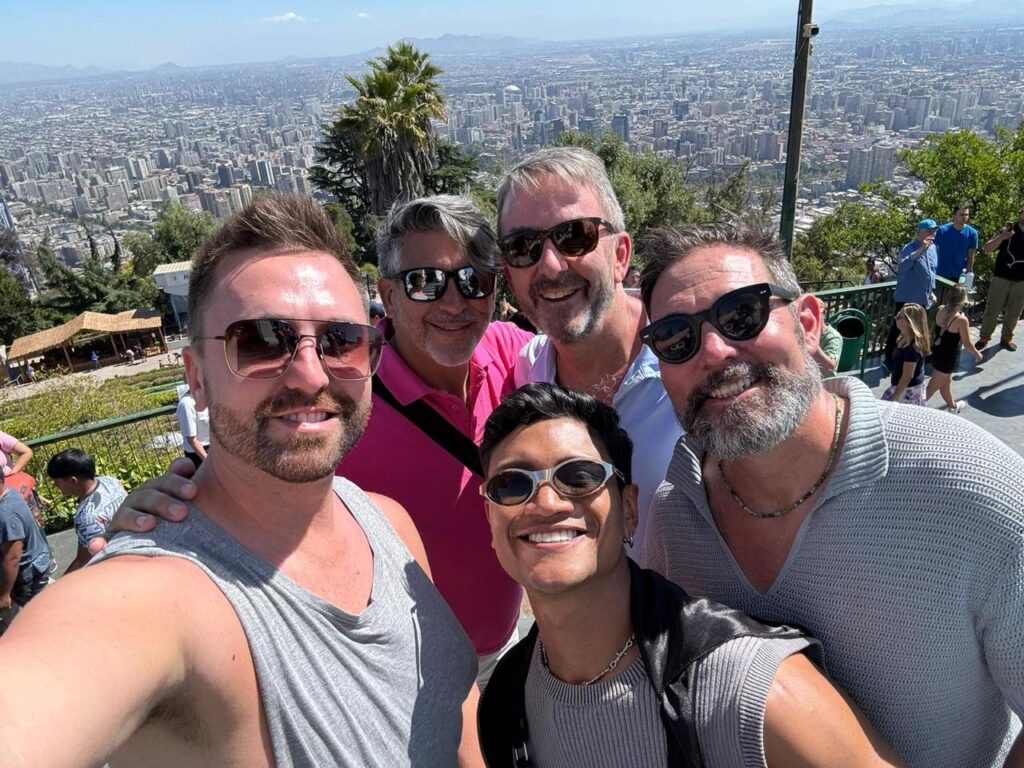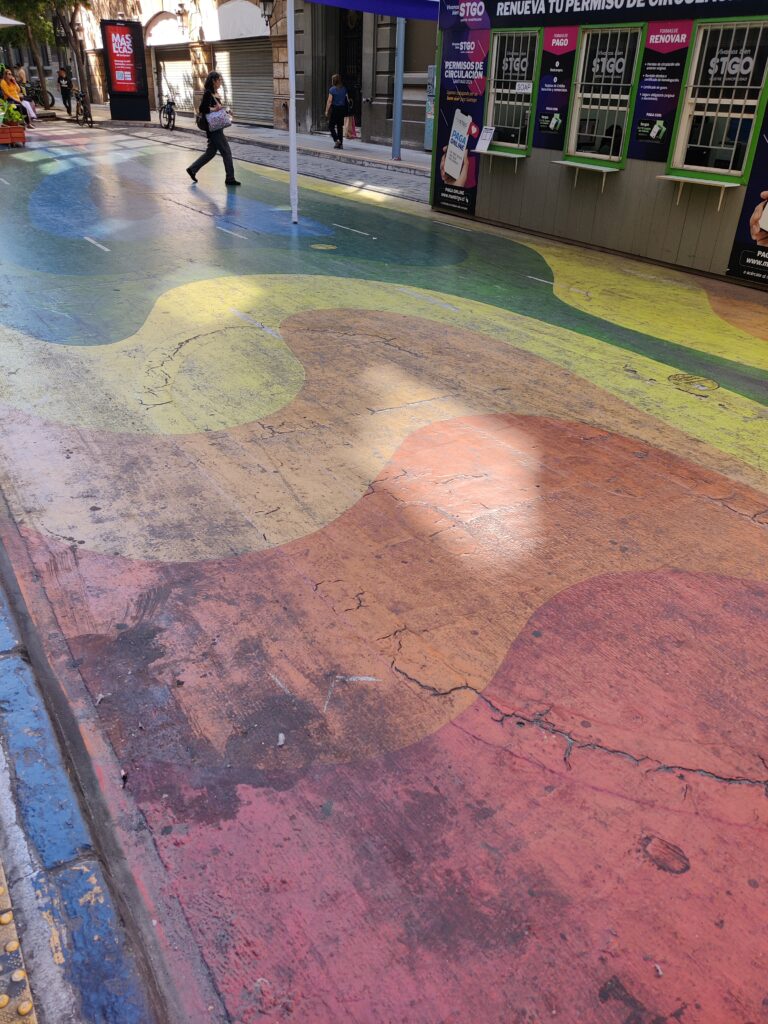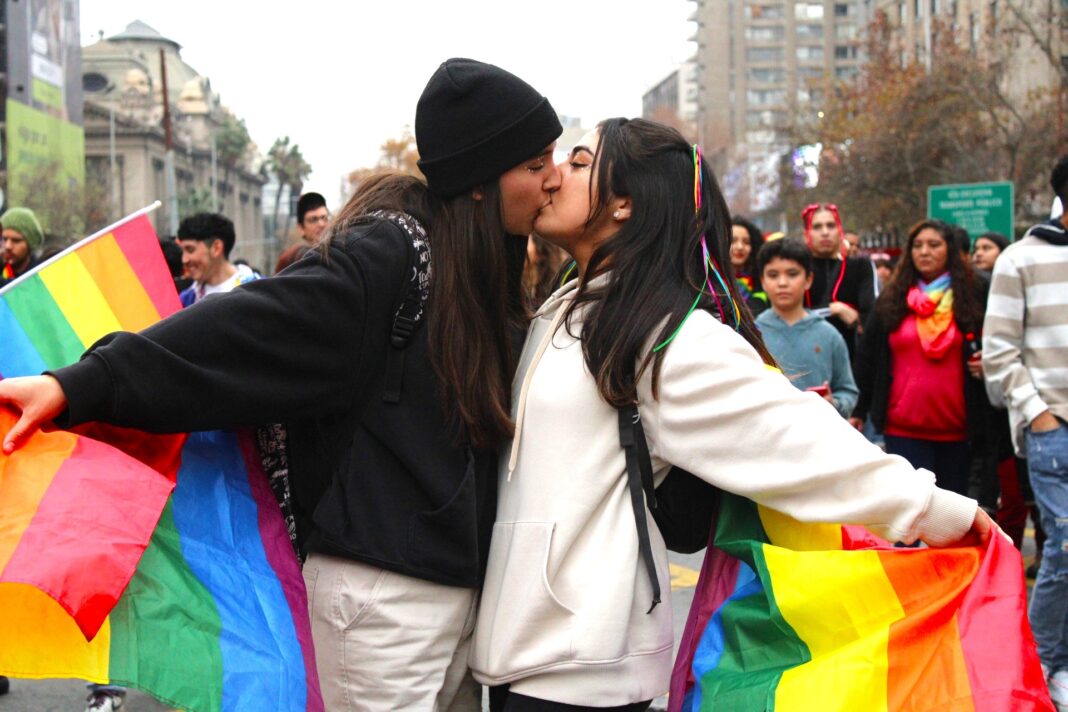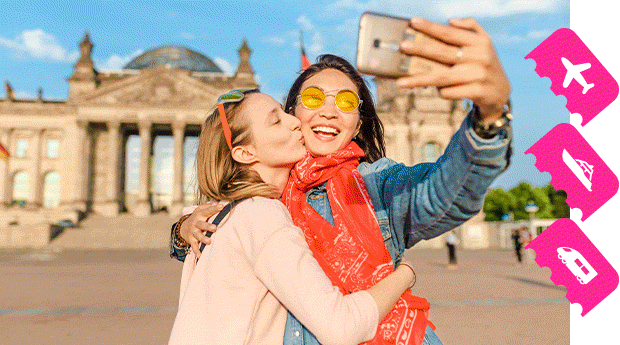Compared to its more boisterous Latin American peers, Chile is a quieter, nerdier country, with a higher average income per person, lower crime and, since its ugly military dictatorship ended in 1990, a very stable democracy.
With a population of fewer than 20 million people, Chile doesn’t attract as much attention as beach-blessed Brazil, mountainous Colombia, crisis-prone (but cheap) Argentina or Peru, home of bucket-list titan Machu Picchu.
And that’s unfair. This long, thin country, tightly squeezed between the Andes Mountains and the Pacific Ocean, is a culturally and geographically rich place to visit, with experiences for adrenaline junkies, hikers, culture vultures, foodies, oenophiles, beach bums and party boys. It’s got the driest place on Earth, the Atacama Desert, as well as several beautiful wine regions, fantastic landscapes and outdoor adventure in Patagonia, sweeping coastal beaches, and even Easter Island, whose giant heads are pondering the meaning of life.
Looking back at history, Chile is considered somewhat more conservative than its neighbours. It legalized same-sex sexual activity in 1999—a little late to the game, but you can blame the dictatorship, which forced LGBTQ+ activism underground. It’s been catching up, though, having legalized same-gender marriage in 2022. Over the last couple of years, several courts have ruled that “nonbinary” is a valid identity on certain documents. In pop culture, the country’s first openly transgender actor, Daniela Vega, starred in the Academy Award–winning film A Fantastic Woman (you can read our Fantastic Woman tour of Santiago here).
Santiago, where about a third of Chileans live, is the key entry point (with direct flights in from Toronto and other major North American cities) for all the country’s attractions. It’s a clean, safe, fun and cosmopolitan city that is not just worth visiting, it’s worth making a special trip for. It not only has its own gay village, centred on Bombero Núñez, between Bellavista and Sta. Filomena (situated within the mainstream entertainment district of Barrio Bellavista), but also you’ll see same-gender couples holding hands and strolling casually in many of its central neighbourhoods, trans flag pins for sale in the flea markets in the Bellas Artes and Lastarria districts, and stone-cold butches pulling pints in the restopubs of Barrio Italia.
Each Santiago neighbourhood has its own character and it’s easy to zip around between them. The parks, street lights, transit and bicycling infrastructure are, for the most part, comparable to that of a European city.
With Chile’s strong economy, the currency exchange rate is not as generous to visitors as in other South American countries, but visitors will find it cheaper than North America and Europe—and the quality of food, accommodations and other experiences usually reflects the price point. Here’s the best of LGBTQ+ Santiago.
What to see and do
Marcha del Orgullo/Pride Parade (June 29, 2024). The first March for Sexual Diversity was held in Santiago in 1999 and there’s been a celebration of Pride in the city every year since. Organized by MOVIH, the national LGBTQ+ advocacy group, the parade is usually held in downtown’s Plaza Italia. Note that it used to be held in November, but is now held in June, which is winter.

Pride Tours. While this Santiago-based gay-run company offers an array of excellent international itineraries for LGBTQ2S+ travellers (they’re doing a Pride Antarctica Adventure in February 2025), they’re also great at creating custom itineraries for big and small groups around Santiago and beyond. From city tours to wine tours to excursions in more remote parts of Chile, their friendly team is dedicated to creating a safe space for LGBTQ2S+ travellers to be themselves while seeing the world. Whether you want to check out the club scene or the best restaurants or something else altogether, they’ll know exactly where to take you.
Plaza de Armas de Santiago de Chile. While some of the historic districts in Latin American cities feel like highly polished museums, others feel run down or paved over. Santiago gets the balance right. It’s got many beautiful historic buildings, lively shopping streets, lots of cafés and lunch places, and excellent people-watching. The plaza itself was founded in 1541. Key buildings include Palacio de La Moneda (the president’s official residence, a former mint), Palacio del ex Congreso Nacional de Chile (“ex” because the Congress has met in the coastal city of Valparaíso since 1990) and the Museo Histórico Nacional (Plaza de Armas 951, Santiago). Check out the rainbow-inflected murals on pedestrianized Banderas, near the intersection of Agustina. Though the nightlife “gaybourhood” is across the river in Bellavista, you’ll see a lot of LGBTQ+-run businesses and locals around the plaza and in the nearby Lastarria neighbourhood.

Cerro Santa Lucía. Situated at the foot of the Andes Mountains, Santiago is surprisingly flat, but hills of various sizes interrupt the urban landscape. This nicely landscaped hill on the edge of the historic centre, in the very gay Lastarria neighbourhood, has winding pedestrian trails that lead to a lookout at the top. Probably one of the city’s most-visited attractions, it used to (we’re told) have a reputation as a gay cruising spot. Castillo Hidalgo, which you’ll pass as you walk up, is used as an events venue.
Museo Nacional de Bellas Artes (José Miguel de la Barra 650, Barrio Bellas Artes, Santiago) and MAC Museo de Arte Contemporáneo (Ismael Valdés Vergara 506, Barrio Bellas Artes, Santiago). These two art galleries stand back to back in the middle of a riverside park. The grandiose Museo Nacional, which is one of the city’s signature landmarks, has a permanent collection focused on Chilean and European art but also hosts good special exhibitions. MAC is mostly dedicated to special exhibitions. Both were being renovated in 2024, with some areas closed off for visitors.
Museo de la Memoria y los Derechos Humanos (Av. Matucana 501, Santiago). The military dictatorship led by Augusto Pinochet, which lasted between 1973 and 1990, left a deep mark on Chile’s psyche. More than 40,000 people were executed, detained and “disappeared,” or tortured as political prisoners during this time. Trans women were arrested, had their heads shaved and were dressed in men’s clothes before they were released. LGBTQ+ life was so underground during this period that the Movimiento de Integración y Liberación Homosexual (MOVILH), which advocates for LGBTQ+ rights, was not founded until 1991. This museum, which opened in 2010, is dedicated to this dark period of the country’s history and is one of the city’s must-visit attractions.
Parque Metropolitano de Santiago. This gigantic park covers the mountain north of the river, stretching from Bellavista to the fancy districts up around the Jardin del Este neighbourhood. What can you do there? Catch a funicular from the Bellavista neighbourhood (the top of Pío Nono) up to Santuario Cerro San Cristóbal, where a giant statue of the Virgin Mary does for Santiago what Cristo Redentor does for Rio de Janeiro—looms large. From here you can take a cable car across the spine of the park, enjoying the majestic city and mountain views. Then take a walk around the Japanese Garden or the zoo.
Gran Torre Santiago/Sky Costanera (Av. Andrés Bello 2425, Providencia, Santiago). At a height of 300 metres—62 floors—this sleek skyscraper is the tallest in Latin America, a symbol of Chile’s modernity. The observation level offers excellent views of the city and the Andes—come at sunset. Weird fact: Though the tower opened in 2012, it remains mostly empty because of a dispute between the owners and the city government. The six-storey mall downstairs is anything but empty, bustling with shoppers after deals and designer brands.
Barrio Italia (on and around Avenida Italia, between Marin and Avenida Irarrázaval, Providencia, Santiago). Chileans like to eat late, enjoying long, social meals in lively venues, sometimes with a singer or DJ. Multitasking! Going out for a casual evening drink is not a thing, which is why this eclectic entertainment district is where you probably want to hang out in the evenings. Casual and upscale restaurants, chic and quirky boutiques in small galleria malls and markets, lots of people-watching opportunities. We’ll mention Barrio Italia eateries in our “Where to eat” section, but come here for a promenade even if you’ve made reservations elsewhere.
Barrio Bellavista (roughly within the boundaries of Manzano, Dardignac, Mallinkrodt and Antonia López de Bello streets). There’s not much to do here during the day except look at all the street art (which is not necessarily a bad way to spend an afternoon) and watch the university students gad about. But at night, all the theatres, restaurants, bars and clubs make this a bustling hangout. Gay nightlife is focused along Bombero Núñez, but remember that there are lots of straight people here, too—drunk straight guys can be a bit obnoxious.
Where to stay
For LGBTQ+-friendly lodgings in Santiago, we suggest roughly dividing the city into two zones and picking the one that best fits your taste and budget. Do you want to be close to the historic centre, Lastarria and Bellavista, the bohemian areas that have cultural institutions and gay nightlife; or do you want to be in a newer upscale zone that encompasses neighbourhoods like Barrio Suecia, Barrio el Golf and Las Condes, where the shopping complexes, brand-name hotels, restaurants and LGBTQ+-friendly bars are more high-gloss? Don’t sweat it too much. The two zones aren’t that far from each other. From ritzy Parque Araucano to the gay village or Plaza de Armas is about 15 minutes by car, 45 minutes by transit.
The Singular Santiago (Merced 294, Lastarria, Santiago). It’s hard to beat the location (walking distance from the bars and the museums) and the amenities at this luxurious Leading Hotels of the World property. Elevated elegance and a rooftop pool.
Luciano K (Merced 84, Lastarria, Santiago). Classy but with bright modern twists, this Art Deco building contains 38 well-appointed rooms, an elegant restaurant and a rooftop terrace with a bar and pool.
Nativa Hotel Boutique (General Ekdhal 151, Recoleta, Santiago). For those unafraid of the implications of Bellavista’s reputation for being “lively” late at night (we’re talking about street noise), this cute, affordable and no-frills spot might do the trick.
The Hip Hotel (Pío Nono 71, Patio Bellavista, Providencia). Accessed from inside Patio Bellavista, the stylish restaurant mall/food court that we’ll mention in “Where to eat,” this splashy crash pad is for those who don’t want to be more than two minutes away from a cocktail and sushi. Why ever leave the party when you can sleep right over it?
W Santiago (Isidora Goyenechea 3000, Las Condes, Santiago). Reliably stylish and always LGBTQ+-friendly, the W is an obvious pick. This one’s got a rooftop pool with a view of the Andes, and it’s close to the golf club and the metro. Its lounge, and some of the room décor, is a colour explosion.
Hotel NH Collection Plaza Santiago (Av. Vitacura 2610, Las Condes, Santiago). Just across the street from Gran Torre Santiago (and its humongous mall), this NH property has a bright, fresh vibe, as well as a pool and fitness centre.
ICON Hotel Santiago (Alonso de Córdova 6050, Piso 23, Las Condes, Santiago). Not only does it have a decent price point for ritzy Las Condes, it’s also got a splashy 1980s style that we love. Spa and gym.
Where to eat
Eating out is a very social endeavour in Chile; restaurants are usually ready to accommodate big groups and, depending on their schtick, might even have live entertainment and DJs. This list includes dining spots that could, in vibe, be mistaken for gay bars, even though you may be expected to order food along with your drinks.
Chilean servers hate splitting cheques, so if you want separate bills, make sure you ask for them before you even sit down.
Bar La Virgen (nine locations including Estados Unidos 246, Lastarria; Patio Bellavista, Constitución 50, Providencia; and Gral Flores 229, Providencia, Santiago). This chain, known for its classic Chilean tapas, has a handmade vibe, with woollen shawls hanging from the backs of its wooden chairs. It’s a classic Chilean party-while-eating place; don’t expect quick service.
La Ofelia Restobar (Loreto 33, Recoleta, Santiago). This super friendly gay-owned restaurant in Bellavista attracts a gay clientele and their open-minded friends. Dishes like roast chicken and stir-fry pork are filling and tasty. Anyway, you’re here to flirt before the clubs on Bombero Núñez open.
Rosa Park (Condell 1732, Barrio Italia, Ñuñoa, Santiago). The lesbian management creates an atmosphere that’s queer friendly but straight welcoming. They’ve got pizza and hamburgers, but you’re probably going to spend more time with the drinks menu.
Roberta Restobar (Condell 1315, Barrio Italia, Providencia, Santiago). This women-run eatery in Barrio Italia has a lovely patio on which to share small dishes like fries with various toppings and empanadas.
El Toro (Av Alonso de Córdova 3788, Piso 1, Vitacura, Santiago). El Toro had a dedicated following before it moved to these bigger digs in 2021. Gay owned and operated, its décor, with the lush red upholstery and wallpaper of a brothel, is more outre than its customers. Dishes like steak, pasta and grilled tuna are well priced.
Bar Liguria (the Manuel Montt location is at Av. Providencia 1353, Providencia, Santiago; there are three others). The brash décor—wildly coloured posters and tiles—is only part of what makes this gastropub so popular. The food, mostly Italian, as you might guess, is good and the staff are good fun.
Patio Bellavista (Pío Nono 71, Providencia, Santiago). One of the more of-the-moment, upscale options in bohemian Bellavista is something that could be called a food court or restaurant mall. Whatever you call it, it’s got a wide range of options, from cool sushi places to steakhouses to fast food.
Where to party
Santiago does not have quite the same bar culture as other Latin American countries. In fact, you’ll walk into some venues thinking, “This is the perfect place for a cocktail,” only to be told they won’t serve alcohol without you ordering food. Some of the places listed here could be in our “Where to eat” section. Clubs tend to get busy after 1 a.m. and stay busy until after 5. Though Mondays and Tuesdays are obviously quieter going-out days in most of the world, they are particularly quiet in Santiago. Drinking on the street and in public places is prohibited.
Casa Padam (formerly Almodobar) (Constitución 172, Providencia, Santiago). High energy and high camp, this small but beloved restobar has drag, dancing and dining. Attracts a young, colourful crowd.
Chueca Bar (Rancagua 406, Providencia, Santiago). “Chueca” means bent, twisted or curvy, so it’s the perfect name for this lesbian-run and focused (but not exclusive) bar. Taking up space never felt so fun. Tapas and a monthly queer tango night.
Limón Santiago (Dardignac 142, Recoleta. Santiago). At first it might feel like you’re entering a speakeasy—you go downstairs, then down a long hallway. But then you go up again to find yourself in the village’s biggest gay club. The dance floor is likely to be packed with a young crowd that’s living large and singing along to the latest Spanish-language hits. A low-attitude hotspot.
Infierno Divas (Bombero Núñez 125, Recoleta, Santiago). One of the places on Bombero Núñez that opens relatively early, this storefront drag bar is reliable fun. The queens lip sync, yes. But they also conduct long freestyle standup comedy-slash-interviews with audience members. Easy fun if you can take the heat.
Dionisio (Bombero Núñez 111, Recoleta, Santiago). One of the oldest gay venues in Santiago, this drag bar is bigger and—dare we say?—more polished than Infierno Divas.
Bar Moulin Rouge (Bombero Núñez 130, Recoleta, Santiago). Primarily a drag bar that attracts a clientele that’s both queer and straight, they also host dance parties, strippers and, upstairs, weekly cruising nights for men only.
Bar 105 Fetish (Bombero Núñez 105, Recoleta, Santiago). For a men’s fetish bar, the space is pretty chic, with sexy decorative objects all over its walls. The friendly staff dress in revealing, sometimes bedazzled outfits (e.g., assless wrestling singlets). Women are welcome downstairs, but upstairs, where the sling and St. Andrew’s cross are located, is men-only and has a no-photos policy.
Club Soda (Antonia López de Bello 125, Recoleta, Santiago). This cool little club is officially gay but attracts a mixed crowd. Music depends on the night, but reggaeton and Latin pop are good bets.
Where gay and bi men can find fun
Morenos (Providencia-area location disclosed on day of party, Whatsapp +56-9-2032-2212). This twice-weekly (usually Wednesdays and Sundays) sex party is hosted in a downtown apartment. Entry charge includes your first drink. Attracts a varied crowd. You take off your clothes on the landing and they’re kept in a bag for you while you’re having fun.
Toros Cruising House (Providencia-area location disclosed after contacting host on Instagram or through Whatsapp +56-9-9199-08667). What seems to be a large private home, with a private courtyard, has been turned into a labyrinthe cruising space. They have a dance floor, as well as sexy underwear for sale.
Turkish Bath Chacabuco 33 (Chacabuco 33, Santiago). This long-standing gay sauna has dry and wet steam rooms in addition to play areas. And it’s got a real soft spot for bears.
Sauna Il Palatino Spa (Esquina Moneda, Maturana 96, Santiago). This downtown gay sauna has all the amenities you’d expect: dry and wet steam, dark room, maze, terrace and massage rooms.
Where to shop and gear up
Ergowear (Piso 5, Domínica 367, Recoleta, Santiago). Perhaps Chile’s biggest supplier of sexy men’s underwear and bathing suits—is there a way to measure that? Primarily online. If you want to touch before you buy, you need to book an appointment on the website to visit the Santiago showroom.
Top Underwear (Paseo Ahumada 196, Santiago). This is a mainstream underwear brand for men, women and children. But we like the name (tee hee), and some of their styles are pretty fun.
Costanera Center (Av. Andrés Bello 2425, Providencia, Santiago). One of the biggest malls in Latin America, this is a temple to global and national fashion brands. The state-of-the-art location of the pervasive Jumbo hypermarket chain has a Chilean wine selection that will make oenophiles weep.
Parque Arauco (Av. Presidente Kennedy, Las Condes, Santiago). It’s not just this luxe mall. The surrounding area, including along Alonso de Córdoba and Nueva Costanera, is also awash in fancy designer shopping.
Feria Artesanal Santa Lucía (Av. Libertador Bernardo O’Higgins S/N & Carmen, Santiago). A market full of independent vendors selling handicrafts and other sorts of Chilean souvenirs.
Calle José Victorino Lastarria. Along and near this street, many vendors sell art, books, fashion and other paraphernalia, some of it quite queer.
Where to go on day and weekend trips
Though Chile has a good public transportation system that allows for independent wandering, taking a tour with a company like Pride Tours can save time and be a more social experience. They offer tours with set itineraries, but can also provide custom tours for groups of all sizes.
Valparaíso. On first glance, this hard-working port city looks a little messy, especially along the waterfront. But wander up into the steep hillside neighbourhoods of Cerro Bellavista, Cerro Conception and Cerro Alegre for a magical UNESCO Heritage experience. Art covers the walls of many winding streets that twist and turn according to the hilly geography. You’ll be delightfully lost within only a few minutes. Stop into one of the many galleries, cafés or bars to get your bearings. We love gay-run Café Trumao (Pasaje Gálvez 213, Casa Amarilla, Valparaíso), which is located in a historic building with great views, and Rojo Galería (Miramar 175, Valparaíso), which has a street-art inspired range of unique items, from one-of-a-kind paintings to kids toys. If all the upping and downing is wearing you out, take a (very cheap) ride on one of the 16 historic funiculars that service the area.
Viña del Mar. If Valparaíso is a city of the working class and artists, then Viña del Mar is for the leisure class. Famous for its international music festival (held annually the third week of February), a six-day event where artists of all genres mix and mingle on stage, it’s also a beach town—a place where beautiful people hang out on weekends.
Valle de Colchagua. Chile has several wine regions. Casablanca, which is on the way from Santiago to Valparaíso, is perhaps the easiest to reach and is included on many tours (including those by Pride Tours). The Valle de Colchagua has a charmingly old-fashioned wine train that goes down the valley, starting in the town of San Fernando, which makes it quite special. Chile has also launched a high-speed train service between Santiago and Curicó, which gets passengers to that wine region in about two hours.
The writer benefited from the guidance, advice and hospitality of Pride Tours while preparing some of the material in this guide. Pride Tours did not review or approve this story before publication. The views are the writer’s own.


